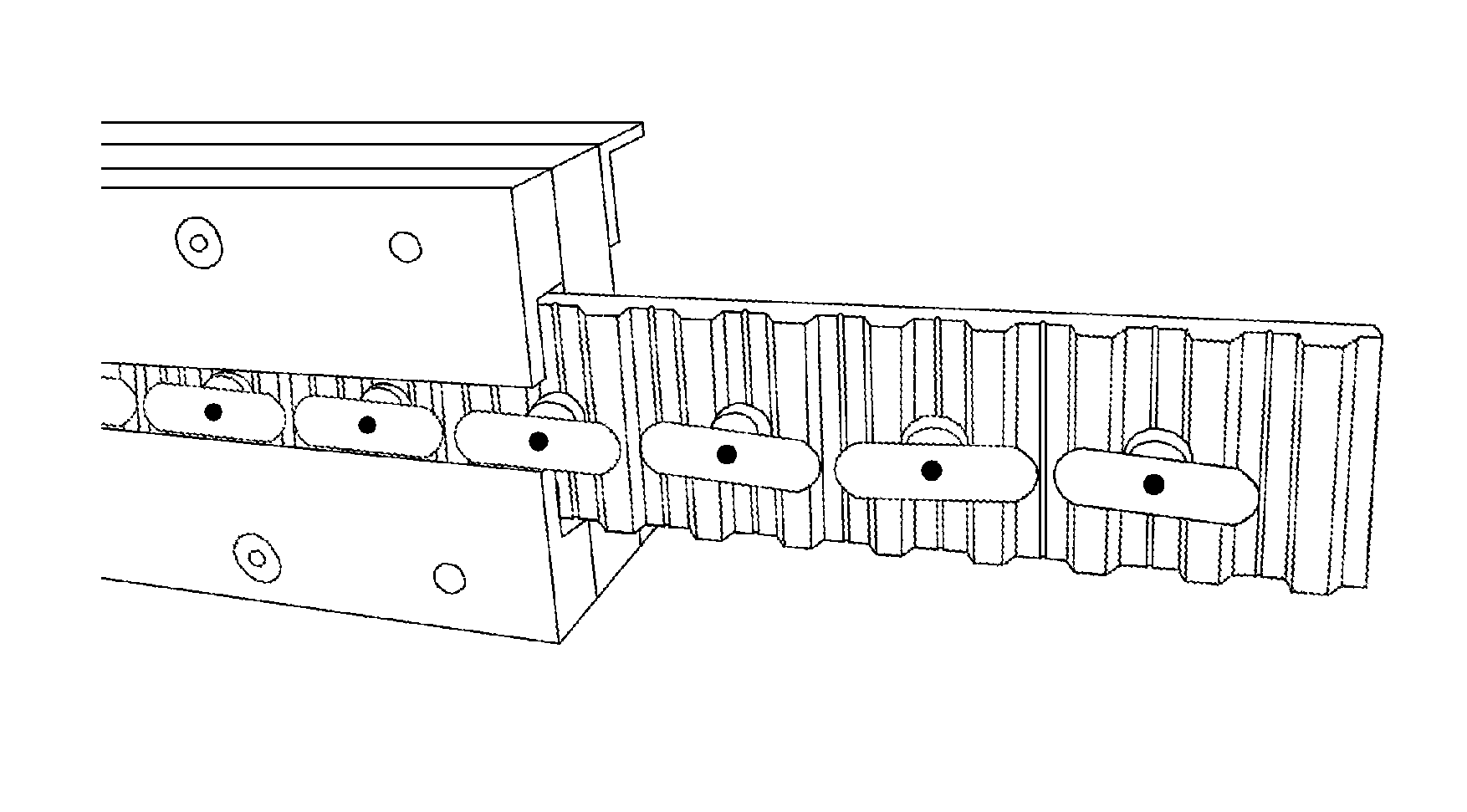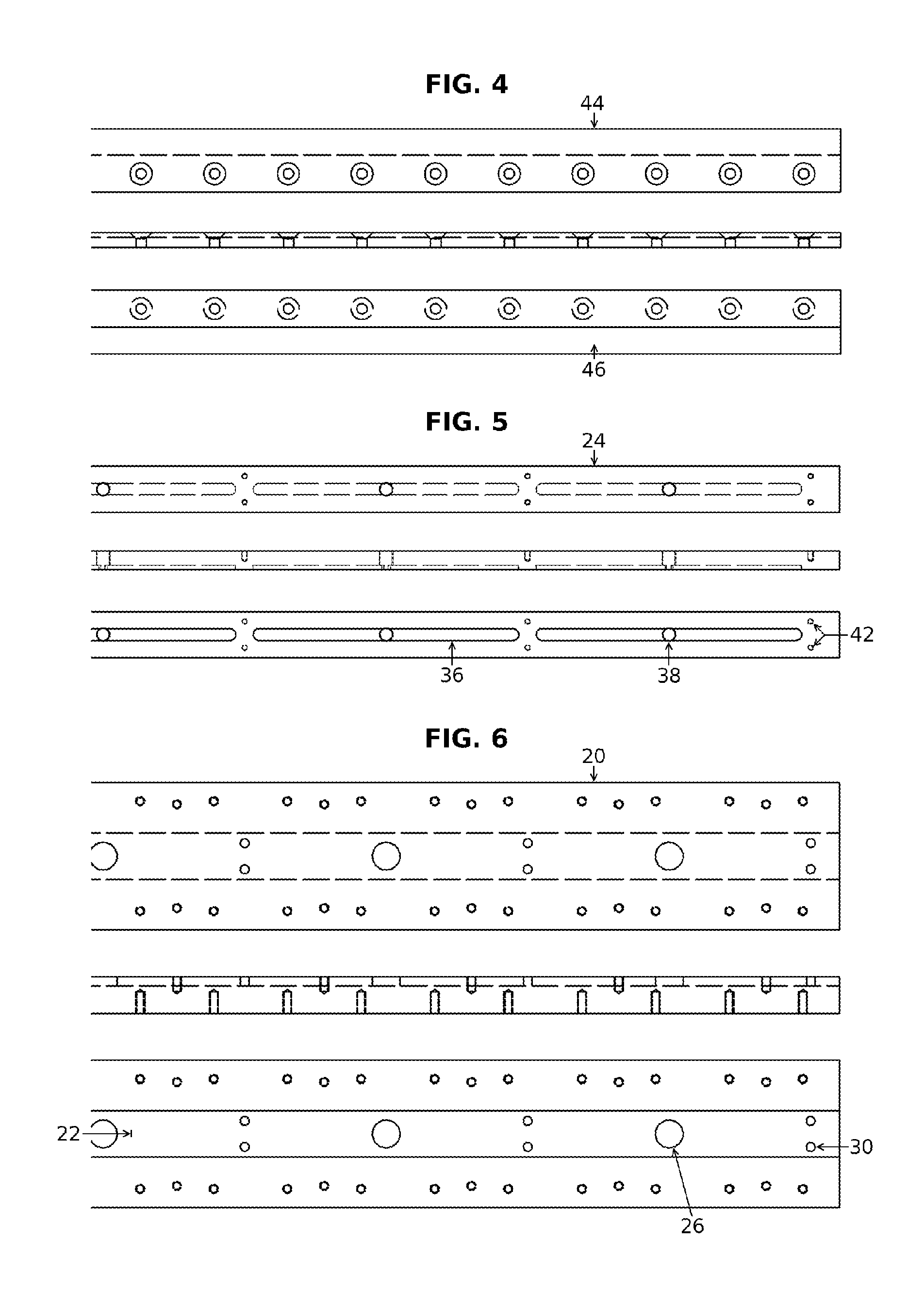Inverted vacuum belt conveyor system
a conveyor system and vacuum belt technology, applied in conveyors, transportation and packaging, storage devices, etc., can solve problems such as belt distortion, and achieve the effects of saving both reaction time and wiring time and material, and efficiently turning vacuum on or o
- Summary
- Abstract
- Description
- Claims
- Application Information
AI Technical Summary
Benefits of technology
Problems solved by technology
Method used
Image
Examples
Embodiment Construction
[0030]Referring to FIG. 1, the conveyor, 10 has a solid main frame as shown in FIGS. 6, 7 and 8 item 20. This frame has a longitudinal chamber (see FIGS. 6, 7 & 8), 22 machined into its lower surface to accept the vacuum rail FIGS. 5 & 8 item 24. Further to FIGS. 6, 7 & 8, 26 is a clearance hole to allow vacuum from the vacuum generator FIG. 7, 28 to be tubed (see FIGS. 7 & 8, 28′) to the vacuum rail and thus to the smooth surface of the toothed belt and so through the holes to the vacuum cup securing the load below the belt. FIGS. 6 & 8, 30 is a clearance hole for a shoulder bolt to allow movement up and down of the vacuum rail while maintaining it in the main frame chamber in FIGS. 6, 7 & 8, 22. FIG. 8, 32 are springs surrounding the shoulder bolts exerting a downward pressure between the main frame and vacuum rail creating a superior seal on the smooth upper surface of the belt FIG. 8, 34. FIG. 5, 24 is a vacuum rail being machined in identical sections to allow vacuum to be appl...
PUM
 Login to View More
Login to View More Abstract
Description
Claims
Application Information
 Login to View More
Login to View More - R&D
- Intellectual Property
- Life Sciences
- Materials
- Tech Scout
- Unparalleled Data Quality
- Higher Quality Content
- 60% Fewer Hallucinations
Browse by: Latest US Patents, China's latest patents, Technical Efficacy Thesaurus, Application Domain, Technology Topic, Popular Technical Reports.
© 2025 PatSnap. All rights reserved.Legal|Privacy policy|Modern Slavery Act Transparency Statement|Sitemap|About US| Contact US: help@patsnap.com



